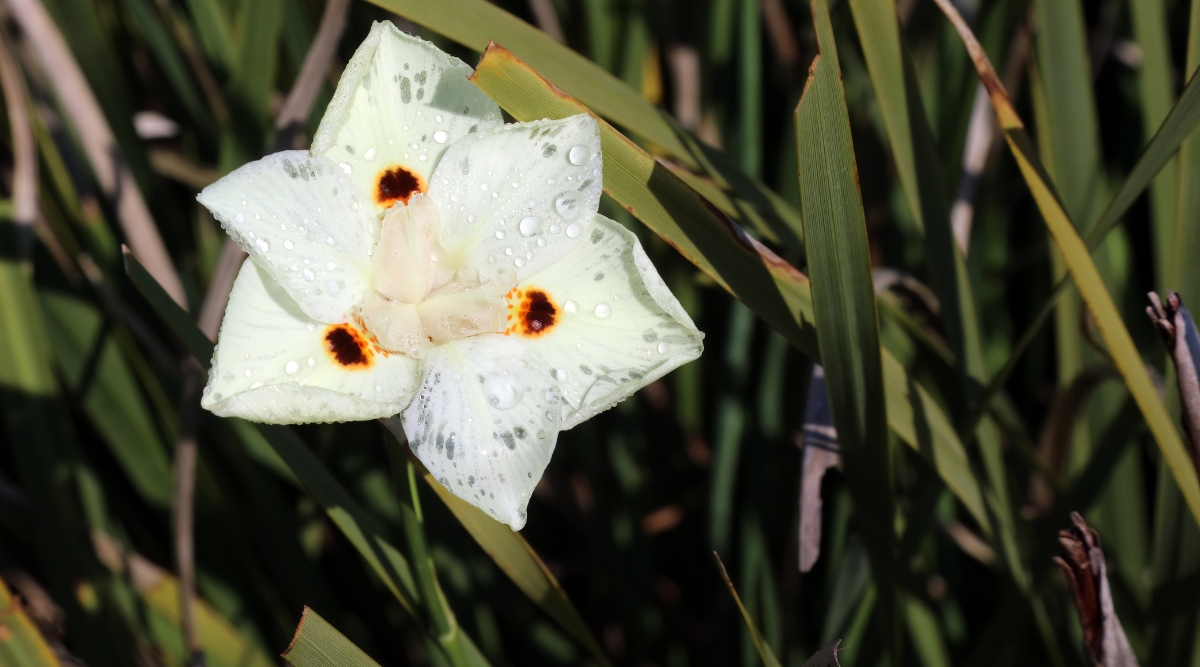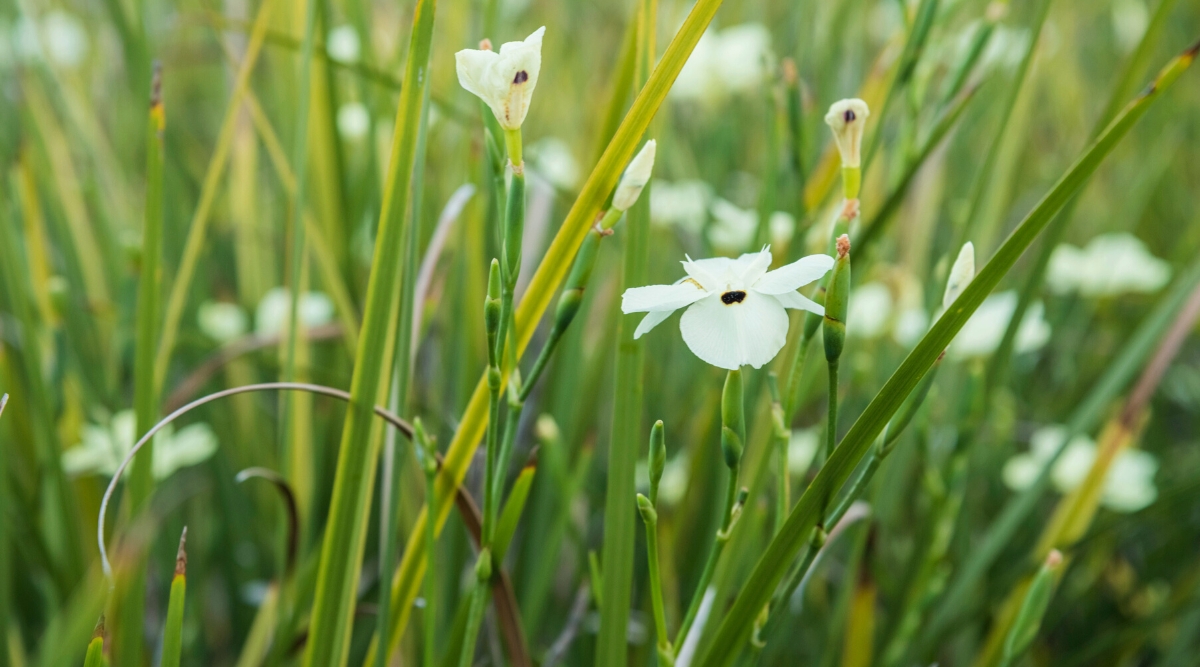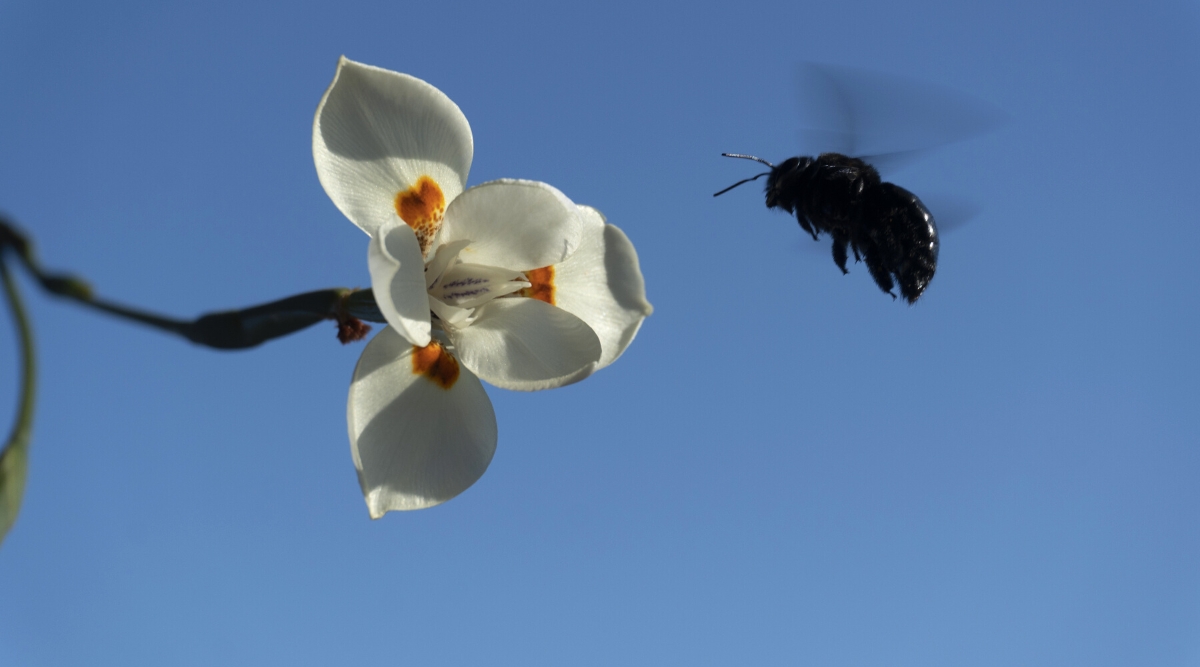Flowers
concerned in grow some bicolor sword lily this year but not sure if it ’s the right plant for you ? Wondering what kind of iris you’re able to grow in your southern garden ? In this clause , licence master nurseryman Liz Jaros offers 9 reasons why you might want to give this lesser - known , ardent - climate iris a closer look .
Contents

Though not a member of the Iris genus , the bicolor fleur-de-lis ( Dietes bicolor ) hails from the same plant family ( Iridaceae ) as its German , Siberian , Dutch , and Japanese iris first cousin and shares a lot of the same characteristics .
Its creamy white flowers are more orchid - like in kind than the common iris diaphragm , but they share the same pattern of 3 belittled upper petals and 3 large lower flower petal . They also have potent ‘ sign ’ near their throat , rhizomatous roots , and strappy , upright foliage .
The biggest departure between bicolor sword lily and plants from the well - known Iris genus is their part of rootage . Dietes bicolor is native to South Africaand partial derivative to warm , more humid regions , while its European and Asiatic relatives prefer tank , drier climates .

Often casually touch to as an African iris ( due to its native roots ) or a fortnight lily ( because it flower every two weeks and has lily - like leaves ) and often confused with the bi - gloss flag ( which is a term commonly used to trace a traditional iris with multi - colored petals ) , a true Dietes bicolor iris diaphragm is its own unique genus .
Averaging 24 inch in top with a full , round wont and sending up multiple flowers per still hunt , bicolor iris plants are hardy between zones 9 and 11 .
They permit soil that does not drain dead and will thrive in multiple sun conditions . We think this isan underrated perennialworth checking out , and we ’ve come up with 9 cause why you might desire to plant some in your yard this season .

You Love a Natural Garden Aesthetic
When planted en masse , bicolor iris create a natural , grassland vibe in the landscape . Its leave sway and move in the zephyr , itscreamy flowers float above the leaf , and it blooms off and on from natural spring to late summer .
After blossoming ends , bicolor ’s dense root systemdiscourages invasive speciesfrom strike in , while its concentrated foliation holds a prissy green colour long into the fall .
Do not implant this genus in rows or adjudicate to control its facing pages if you want a natural force . have these plants wind and curve at the edge of the holding , or give them some room to roll near a creek bed . Work some small , native perennial into the mix and have them mingle as they would in the natural state .

You Live in a Warm, Humid Part of the World
To rise Dietes bicolor as a perennial , you ’ll need to live somewhere warm and moist . As natives of South Africa , these durable beauties have a hot story and will not survive in areas that receive temperature below 25 degree Fahrenheit .
botanist have given this perennial ahardiness zona reach of 9 to 11 , which means northern gardeners are out of lot unless they want to dig them up and convey them inside for wintertime .
Dietes also revel morehumiditythan their European iris cousins and wilting in the hot , dry sun . If you ’d like to arise them in an desiccate mood , plant them where they will get some relief from live afternoon ray and be prepared to provide auxiliary tearing . A hose or irrigation system with a mist setting will typically do the trick .

You Have a Large, Sunny Area With Moist Soil
Bicolor irises will flower best in areas with at least 6 hour of sunlight per day and choose moist soil . They can even handle longsighted periods of standing water during their participating grow periods . This makes them particularly well - beseem to low expanse or waterside locations where wet level may rise and settle throughout the 24-hour interval , week , or year .
During full stop of drouth or in locations with soil that tends toward dry , supply supplemental lacrimation as needed tokeep your bicolor iris antecedent moist , healthy , andactive . This may think 3 to 5 times per calendar week , depending on your unique conditions , humidity floor , and rain totals . Or it may mean once or double . If your irises are wilting or sagging , they are probably athirst .
You’re Looking for a Neutral Addition to Your Perennial Pallete
Bicolor fleur-de-lis pair well with almost everything you may already have in the thou . Their neutral white flower gloss does not compete with other perennials or call out for attention . Although stunning in a large mass , the genus is also completely comfortable in a patronise role .
Plant Dietes with other E. B. White and emollient for a serenemoon gardeneffect , or mould them into a sheer tropic landscape toprovide dividing line . They can also be incorporated into a soft pastel pallet with pinks , purples , and yellows .
You Need Texture in the Landscape
Bicolor irises are fundamentally evergreen plant life and will hold their leave all season . For this reason , they serve an aesthetic aim in the landscape even when not in bloom .
Their uncompromising , upright cast and natural spring shape create anexcellent ground for low - spread out perennials . Their leafage also provides a great , spiky direct contrast against finely textured or bright colored leaves of other flowering plants .
You may remark some brownish or wilted leaves later on in the time of year , in particular on the undermost layers . These can be crop off with a pruning putz or pulled by hand to keep plants level-headed and green all year .

You Want a Unique “Thriller” for Your Container Garden
The same attributes that make the bicolor iris a lulu in natural preferences make it a succeeder in the container garden . With a sturdy , just leaf social system that hold its colouration all time of year and a achromatic , creamy white flower palette , this plant works really well as a fundamental figure in a patio mess or araised bed .
couple bicolor iris with annualsthat will provide weather color , and bed in some trail plants to spill over the side . You ’ll have a unique arrangement that stays beautiful from saltation to devolve , and you’re able to leave behind the irises in blank space to come back next year .
design to divide every other descent to keep your container from getting crowded . And cut leaves down to keep growth vigorous and salubrious .

You Want to Attract Pollinators
With colorful yellow splotching at their throats and a clear , sweet scent , bicolor irises areattractive to pollinatorslike butterfly , bee , insects , and birds . When planted in large amount in a cheery location , their leaves and flowers provide graze option to a host of pollinators .
establish them in the locality of food harvest to serve promote a robust green groceries season , or work them into an urban terrace plan toprovide pollinate opportunitieswhere they can be scarce . Since bicolor irises are so gentle to handle for and fly high even when slightly neglected , they make a natural alternative for pollinator - focused companion plantings .
You Can Give Them a Little Room to Run
Since bicolor fleur-de-lis diffuse via rootstock enlargement and cum dissemination , they multiply easily and can ingest a large field rather quickly if left unbridled . This can be a good thing if you ’re looking tosuppress weeds , crowd out encroaching plant species , or substitute traditional turf grass , but maybe not so undecomposed in a small urban backyard that is tight on infinite .
Remove spend flower heads before they go to ejaculate and drift in the wind to control their spread . This will stop them from self - planting elsewhere on your prop . you could also control their territory by digging them up and redistributing new rhizomes or installing a hard border that will forbid roots from run where you do n’t want them .
You’d Like to Control Erosion
In landscapes with slosh terrain or prone to corroding , bicolor irises can be effectively used to hold soil in shoes . The plant ’s dense , fibrous root structure can play a major role in preventing surface loss from wind , rain , and running H2O .
They alsokeep the earth oxygenise and loamywhile discouraging soil compaction that can render the soil less fertile .
Since the genus can tolerate pie-eyed filth and periods of standing piddle , bicolor iris can be planted near the shore of a lake or pond that climb and light with rain tier .

They also work well on a hill or switchback that descends to the water ’s edge , creating ocular pastime and morphological unity . So implant bicolor irises for erosion control is both pretty and bright .
Final Thoughts
While Dietes bicolor is not a plant genus on the crown of everyone ’s natural language , we feel it should be ! With a bloom period that essentially comes and goes all season , a foliage shape that proves attractive in the garden even when the plant life is not flower , and a allowance for ground that does not always run out perfectly , bicolor iris is definitely an underrated optionfor meet some of your most canonic garden motivation .

